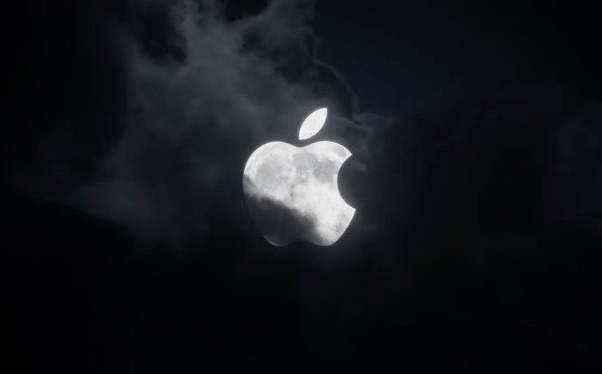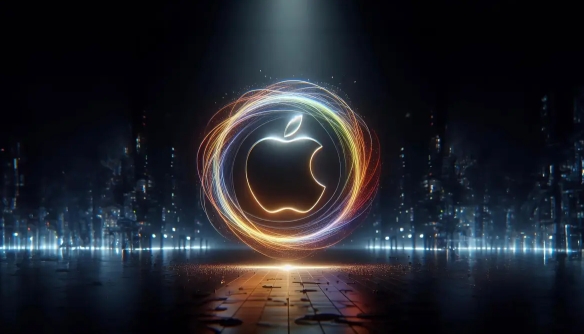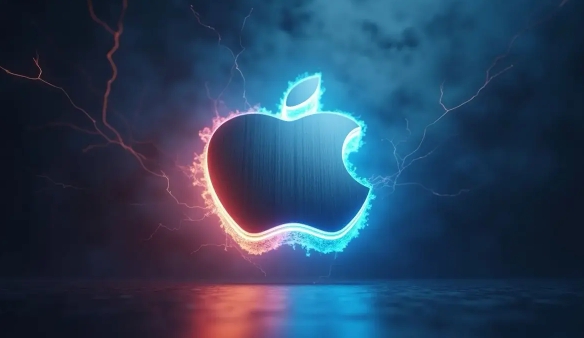 Computer Tutorials
Computer Tutorials
 System Installation
System Installation
 How to properly format a USB for a macOS bootable installer?
How to properly format a USB for a macOS bootable installer?
How to properly format a USB for a macOS bootable installer?
To correctly format the USB to create a bootable installation disk that is recognizable to macOS, use specific formats and partition settings. First make sure that the USB is at least 12GB (16GB or greater recommended) and back up the data; then format the USB to "Mac OS Extended (Journaled)" through Disk Tool and set the partition scheme to "GUID Partition Map"; then download the required version of the macOS installer from the Mac App Store; then run the command sudo /Applications/Install\\ macOS\\ [version].app/Contents/Resources/createinstallmedia --volume /Volumes/USB name to create a bootable USB; finally hold down the Option key when restarting the Mac to select USB boot. The order of the above steps cannot be reversed, and it must be operated accurately to avoid accidentally deleting hard disk data.

To properly format a USB for a macOS bootable installer, you need to prepare the drive using specific formatting and partitioning settings that macOS expects. This ensures the installer can recognize and use the USB correctly during installation.

Use a USB with at least 12GB of storage
Before anything else, make sure your USB flash drive has enough space — at least 12GB is recommended, though 16GB or more is better if you're installing a newer version of macOS. The drive will be completely erased, so back up any important data before proceeding.

- Plug in the USB drive
- Open Disk Utility (you can find it via Spotlight or Applications > Utilities)
- Select the USB drive from the list on the left (be sure to pick the correct one!)
- Click “Erase” at the top
- Choose these settings:
- Name : Something like "MacUSB" or "InstallDrive"
- Format : Mac OS Extended (Journaled)
- Scheme : GUID Partition Map
Click “Erase” to confirm. Wait until the process completes.
Download the macOS installer
You'll need a copy of the macOS installer from the Mac App Store. Depending on your needs, this could be the latest version or an older one compatible with your hardware.

- Go to the Mac App Store or search directly in the App Store app
- Find the macOS version you want and click "Get" then "Download"
- The installer will appear in your Applications folder
Note: If you're downloading a version not for your current Mac, you may need to adjust System Preferences to allow apps from unidentified developers.
Create the bootable installer using Terminal
Once the USB is formatted and the macOS installer is downloaded, it's time to create the bootable USB using the Terminal command line tool.
- Open Terminal (again, under Applications > Utilities)
- Type or paste the following command, replacing “YourUSBName” with the actual name of your USB:
sudo /Applications/Install\ macOS\ [Version].app/Contents/Resources/createinstallmedia --volume /Volumes/YourUSBName
For example, if your USB is named “MacUSB” and you're installing Monterey:
sudo /Applications/Install\ macOS\ Monterey.app/Contents/Resources/createinstallmedia --volume /Volumes/MacUSB
- Press Enter and type your password when prompted (you won't see it as you type)
- Confirm by typing “Y” when asked
- Wait several minutes while the tool copies the installer files to the USB
This process will erase the USB again and make it bootable.
Boot from the USB
After the process finishes, your USB is ready to use. To test or install macOS:
- Insert the USB into your Mac
- Restart the Mac
- Immediately hold down the Option (⌥) key after restart
- You should see the USB drive labeled “macOS Install Media” — select it with the arrow keys and press Enter
If everything was done right, the macOS installer will load from the USB.
That's the basic process. It's straightforward once you've got the steps down, but easy to mess up if you choose the wrong disk or skip a formatting step. Double-check everything before hitting “erase” or running the command.
The above is the detailed content of How to properly format a USB for a macOS bootable installer?. For more information, please follow other related articles on the PHP Chinese website!

Hot AI Tools

Undress AI Tool
Undress images for free

Undresser.AI Undress
AI-powered app for creating realistic nude photos

AI Clothes Remover
Online AI tool for removing clothes from photos.

Clothoff.io
AI clothes remover

Video Face Swap
Swap faces in any video effortlessly with our completely free AI face swap tool!

Hot Article

Hot Tools

Notepad++7.3.1
Easy-to-use and free code editor

SublimeText3 Chinese version
Chinese version, very easy to use

Zend Studio 13.0.1
Powerful PHP integrated development environment

Dreamweaver CS6
Visual web development tools

SublimeText3 Mac version
God-level code editing software (SublimeText3)
 Where is the pycharm interpreter?
May 23, 2025 pm 10:09 PM
Where is the pycharm interpreter?
May 23, 2025 pm 10:09 PM
Setting the location of the interpreter in PyCharm can be achieved through the following steps: 1. Open PyCharm, click the "File" menu, and select "Settings" or "Preferences". 2. Find and click "Project:[Your Project Name]" and select "PythonInterpreter". 3. Click "AddInterpreter", select "SystemInterpreter", browse to the Python installation directory, select the Python executable file, and click "OK". When setting up the interpreter, you need to pay attention to path correctness, version compatibility and the use of the virtual environment to ensure the smooth operation of the project.
 The difference between programming in Java and other languages Analysis of the advantages of cross-platform features of Java
May 20, 2025 pm 08:21 PM
The difference between programming in Java and other languages Analysis of the advantages of cross-platform features of Java
May 20, 2025 pm 08:21 PM
The main difference between Java and other programming languages is its cross-platform feature of "writing at once, running everywhere". 1. The syntax of Java is close to C, but it removes pointer operations that are prone to errors, making it suitable for large enterprise applications. 2. Compared with Python, Java has more advantages in performance and large-scale data processing. The cross-platform advantage of Java stems from the Java virtual machine (JVM), which can run the same bytecode on different platforms, simplifying development and deployment, but be careful to avoid using platform-specific APIs to maintain cross-platformity.
 How to stop Microsoft Edge automatic updates
May 21, 2025 am 10:12 AM
How to stop Microsoft Edge automatic updates
May 21, 2025 am 10:12 AM
How to stop Microsoft Edge Automatically Update Microsoft Edge is the default browser that comes with Windows 11. Earlier, the Edge browser received updates as the Windows operating system was updated. However, the Edge browser based on Chromium has changed that. The browser will now automatically update in the background without your knowledge. In this article, we will explain how to stop automatic Microsoft Edge updates in Windows 11 and macOS. Related: How to disable automatic updates in Google Chrome? Check for automatic edge updates Chromium-based Edge vs. Goo based on Chromium backend code
 Commands and configurations for starting Apache service in macOS system
May 16, 2025 pm 10:00 PM
Commands and configurations for starting Apache service in macOS system
May 16, 2025 pm 10:00 PM
The command to start the Apache service on macOS is sudoapachectlstart, and the configuration file is located in /etc/apache2/. The main steps include: 1. Edit the httpd.conf file, modify the Listen port such as Listen8080; 2. Adjust the DocumentRoot path to the personal directory such as /Users/your_username/Sites, and update the corresponding permission settings; 3. Use the sudoapachectlgraceful command to restart Apache to ensure that the configuration takes effect; 4. Enable the mod_deflate module to compress data to improve page loading speed.
 MySQL installation tutorial teach you step by step the detailed steps for installing and configuration of mySQL step by step
May 23, 2025 am 06:09 AM
MySQL installation tutorial teach you step by step the detailed steps for installing and configuration of mySQL step by step
May 23, 2025 am 06:09 AM
The installation and configuration of MySQL can be completed through the following steps: 1. Download the installation package suitable for the operating system from the official website. 2. Run the installer, select the "Developer Default" option and set the root user password. 3. After installation, configure environment variables to ensure that the bin directory of MySQL is in PATH. 4. When creating a user, follow the principle of minimum permissions and set a strong password. 5. Adjust the innodb_buffer_pool_size and max_connections parameters when optimizing performance. 6. Back up the database regularly and optimize query statements to improve performance.
 Which is better, uc browser or qq browser? In-depth comparison and evaluation of uc and qq browsers
May 22, 2025 pm 08:33 PM
Which is better, uc browser or qq browser? In-depth comparison and evaluation of uc and qq browsers
May 22, 2025 pm 08:33 PM
Choosing UC browser or QQ browser depends on your needs: 1. UC browser is suitable for users who pursue fast loading and rich entertainment functions; 2. QQ browser is suitable for users who need stability and seamless connection with Tencent products.
 How to update the system's own software
May 19, 2025 pm 06:48 PM
How to update the system's own software
May 19, 2025 pm 06:48 PM
Updating the software that comes with macOS is simple and important because it can fix bugs, improve performance, bring new features and security improvements. You can update through the "Software Update" option in "System Settings" or "System Preferences" and follow the prompts. If you encounter problems, try restarting your Mac or checking your network connection, and the Apple Support page also provides a solution. It is recommended to keep the system up to date, back up data before update, and ensure Wi-Fi and sufficient storage space. Update details can be viewed on Apple's official website.
 How to adjust screen brightness on macOS
May 16, 2025 pm 08:39 PM
How to adjust screen brightness on macOS
May 16, 2025 pm 08:39 PM
Adjusting screen brightness on macOS can be fine-tuned using the brightness adjustment keys on the keyboard or through system preferences. 1. Press the Sun icon keys on the F1 and F2 keys to quickly adjust the brightness. 2. Drag the slider in the "Display" option in "System Preferences" to make minor adjustments. 3. Enable the "Auto-adjust brightness" function to make the brightness change with the ambient light. 4. Use the "Night View" mode to reduce blue light to protect your eyes. 5. Developers can use AppleScript to automate brightness adjustments.






